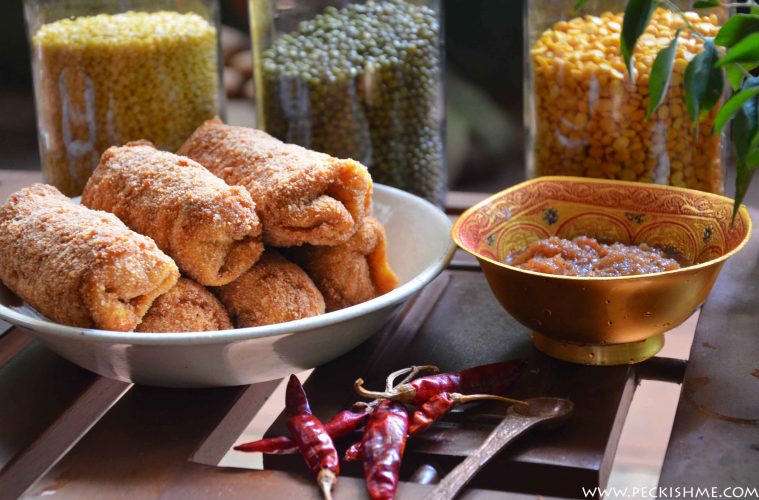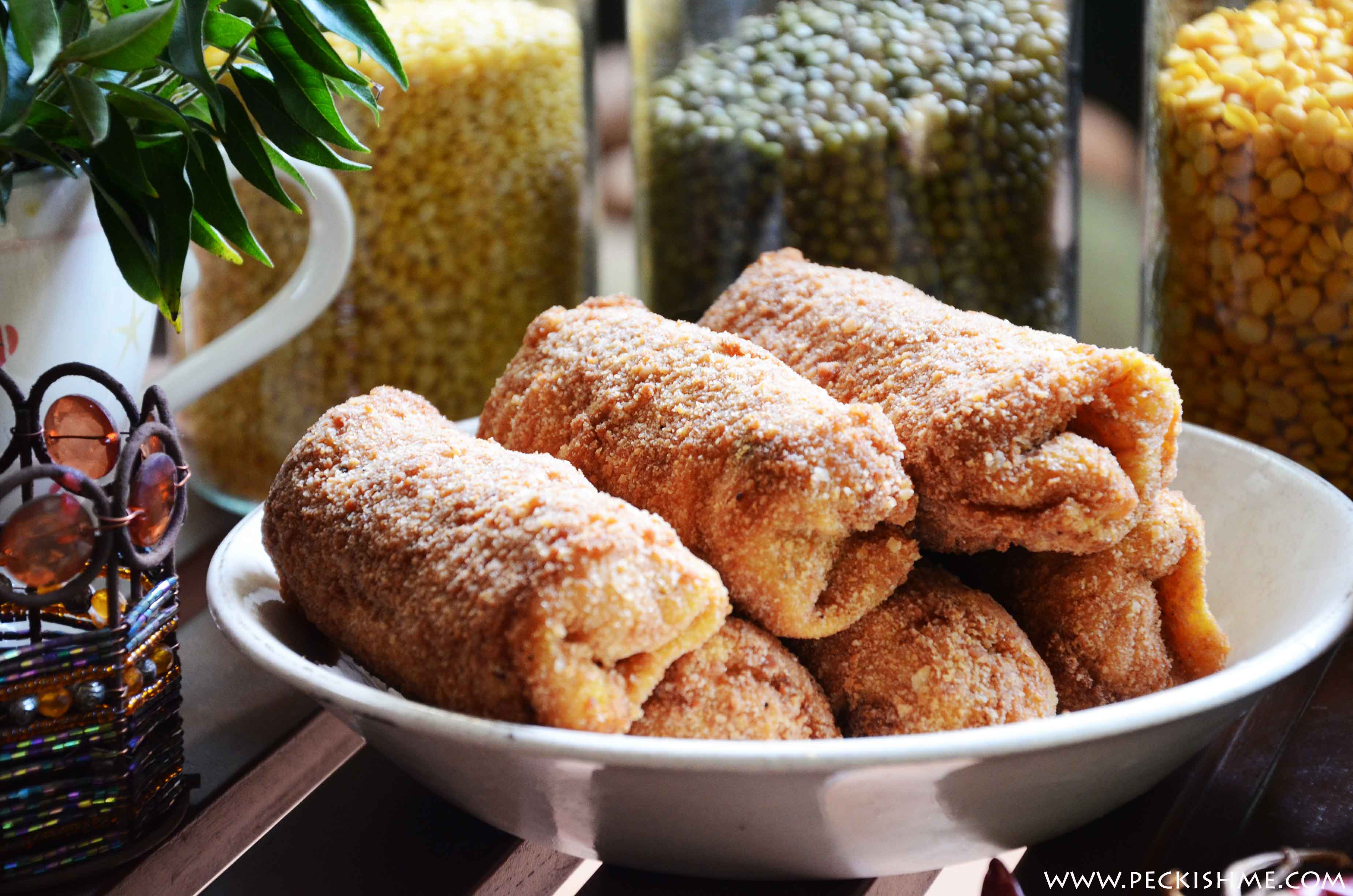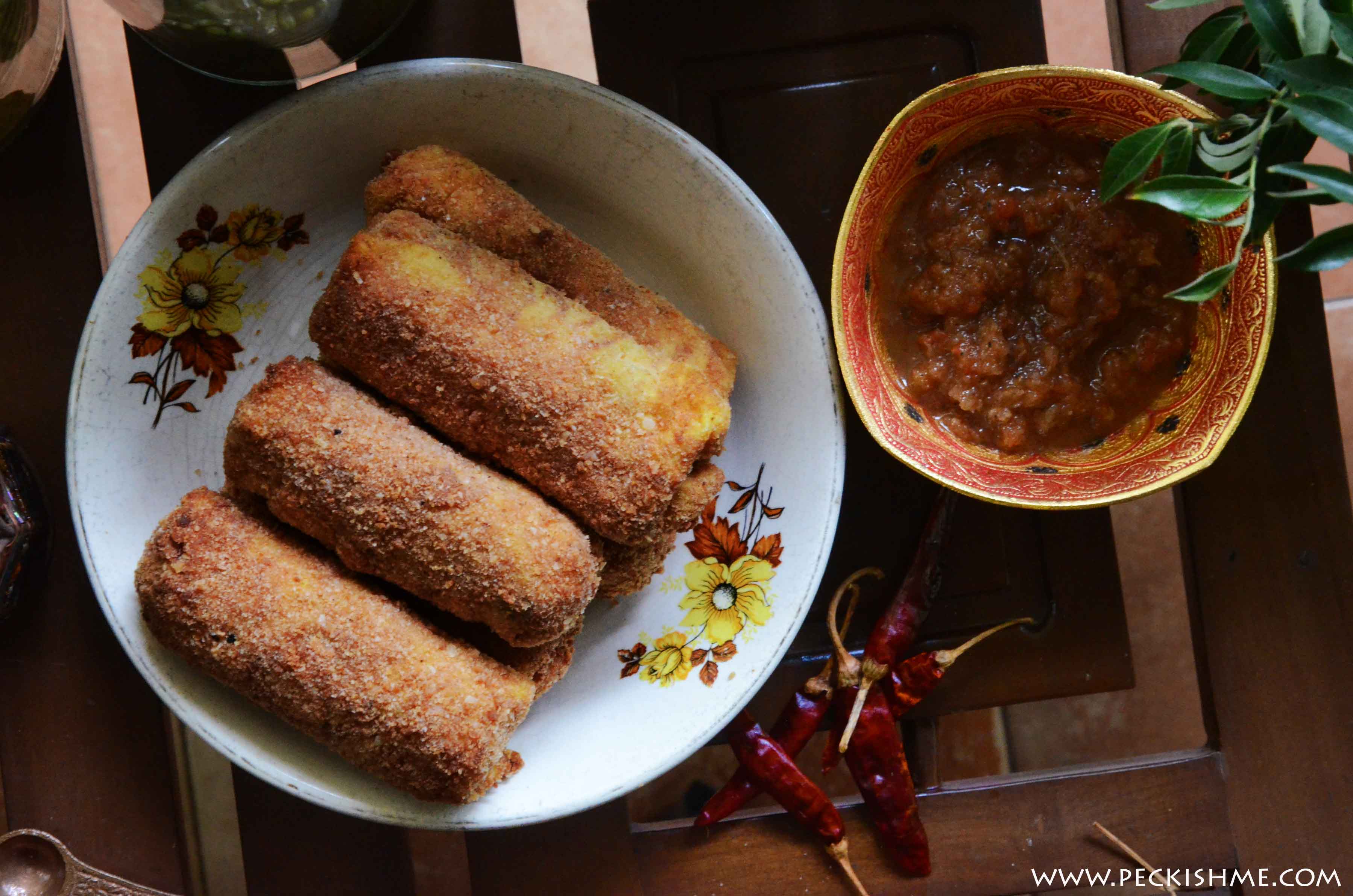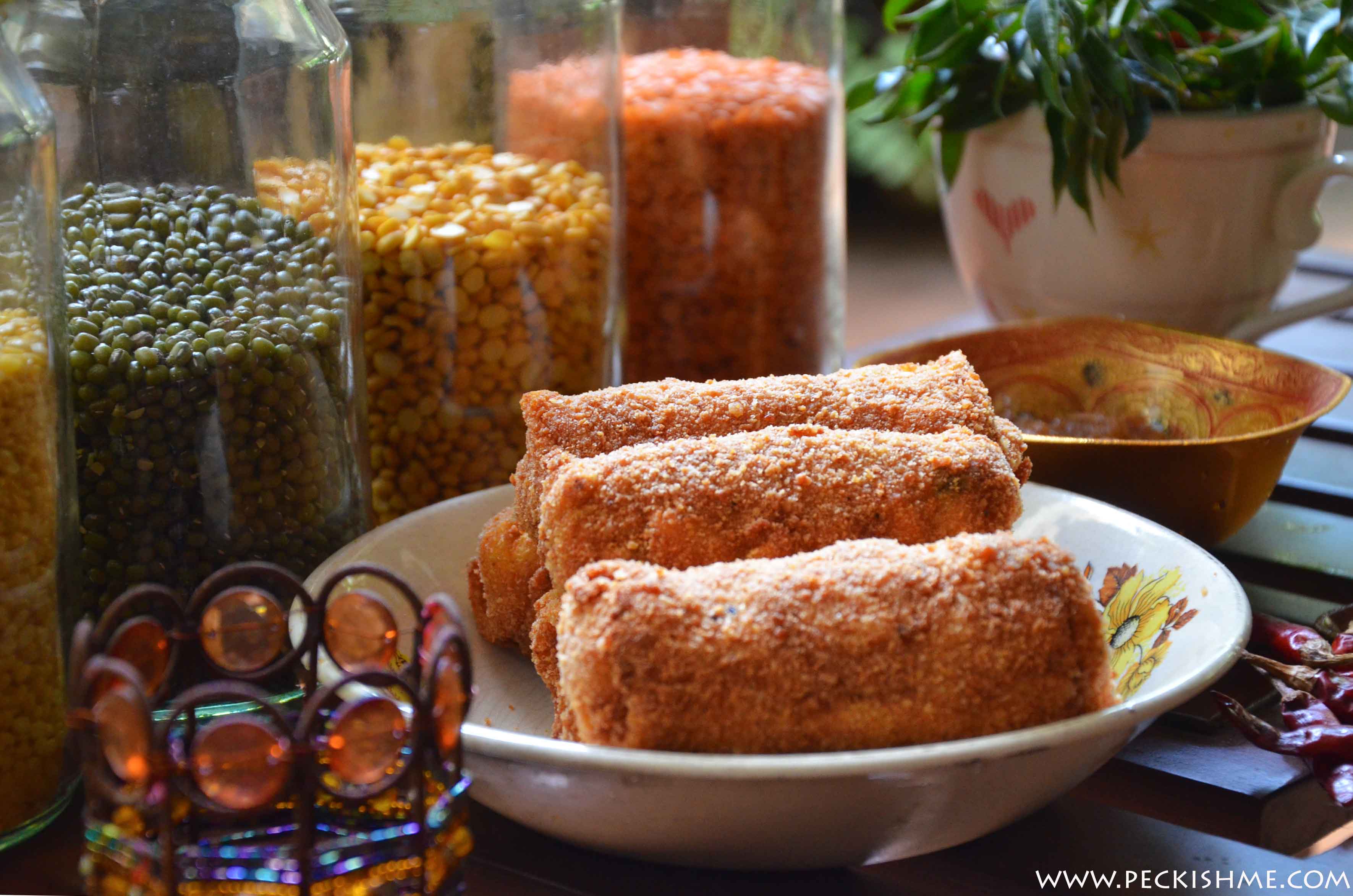When we were small, these thin, round rolls coated with bread crumbs and deep fried to perfection were simply called “rolls”. At a later stage someone wanted to posh things up a bit and wanted to call it “Chinese rolls”. But now, the world simply knows this delicious treat as the Sri Lankan/Ceylonese roll.
I was in Chennai at that time instructing at a dancing academy to pass the time that me and my mother who happened to come to pick me up headed downstairs to the pastry shop to grab a bite. It is then that we noticed these “Ceylonese rolls” in the showcase. Surprised and amused, we each had one which tasted nothing like the oily, so-bad-but-so-good roll that your normal ‘Petti Kadey’ would sell you. Some years later in Australia, we came face to face with the “Sri Lankan roll” once again. Once again we were disappointed to not find the familiar flavours within that we used to take for granted.
But the point was, the humble ‘Sri Lankan roll’ was making waves around the world!
Forming part of the very Sri Lankan “short eats” mafia, the Sri Lankan roll is a favorite among the young and the old alike. As school children we were overjoyed when we were given rolls for breakfast and it is a favourite evening snack among the Sri Lankans, ideal with a cup of plain Ceylon tea. Like the English scone to high tea, no Sri Lankan tea party is complete without the humble roll. The roll features in almost every occasion, birthday parties, anniversaries, farewells, get-togethers with friends, this crunchy roll has come to be the life of the party over the years.
Nobody knows where the roll came from. Although it is referred to as Chinese rolls by many, there’s nothing Chinese about it. It CAN be suspected that it is a deviation of the Chinese spring role but it is noteworthy that the only thing the both of them have in common is that they are cylindrical roles embodying a filling wrapped in a casing.
This is one of those childhood treats that mother used to make for us. As children, me and my brother were strictly prohibited from what Sri Lankan parents refer to as “Kada choru” (nasty stuff bought from shops) and my mother in turn insisted that she makes them for us at home. So rolls were something she made for us at home and we would wait, salivating at the smell of these delicious rolls frying in hot oil. And she still haven’t stopped making! In the place of my brother who is now abroad, my husband now has joined the salivation ranks and can be spotted in the exact same position that me and my brother waited for them to be ready. Cute as a button. A salivating button :)
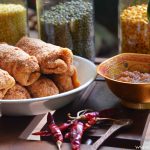

Fish rolls
Ingredients
- Tuna - 200g, mashed or crumbled, deboned (canned fish or any other cubed fish would do)
- Potatoes - 300g, boiled, mashed
- Onion - 1, large, chopped
- Curry Leaves - 2 sprigs
- Lemon juice - 2 tsps
- Ginger - 1 tsp, chopped
- Garlic - 1 ½ tsp, chopped
- Curry powder - ½ tsp
- Salt & Pepper - To taste
- Green chilis - 2, chopped
- Oil - to fry
- For the pancakes
- Plain Flour - 2 cups
- Egg - 1
- Turmeric powder - A pinch
- Salt - A pinch (or as needed)
- Milk - 1 cup (or more)
- For the coating
- Dry bread crumbs - 1 cup
- Eggs - 2
- Oil - to fry
Instructions
To make the filling
- Heat a little oil in a pan. Add to this the ginger, garlic and the curry leaves. Sautee until fragrant.
- Add in the onion. Sautee until translucent.
- Add to this the mashed fish. Sautee well until dry and fragrant. Add the salt, pepper and curry powder.
- Add the potatoes. Mix well. Take off heat.
- Add salt, pepper as needed. Add the lime juice. Mix well.
To make the pancakes
- Blend together all the pancake ingredients.
- Adjust salt. Add more milk if needed.
- Heat a skillet with a little oil or butter. Once well heated, pour on a ladleful of batter on to the pan at a time to make thin pancakes.
To assemble
- Place about 3 tblsps of filling at the middle of each pancake and fold the two opposite sides (sides that constitute the two ends of the roll). Roll the filling in the pancake in a way that no filling is exposed.
- Beat an egg in a small bowl. Coat the rolls in the egg batter and then dip it in the bread crumbs. Press to ensure that you cover the rolls completely with the bread crumbs.
- Deep fry in hot oil until golden.
Serve warm with a tomato ketchup. You can make your own too! I made mine with a mixture of tomatoes, white wine vinegar, sugar and a little chili.
While the most popular filling for these rolls is mostly fish, mutton, chicken, beef and vegetable rolls too are found in pastry shops today.
Deliciously crunchy bread crumbs coat the rolls on the outside and when bitten in, your teeth sink into the wonderfully soft pancake inside slightly crunchy from the deep fry. The crunchy coating of deep fried bread crumbs cover a deliciously soft pancake embracing a flavourful filling within, one bite and you are treated to a heavenly crunch, a delightful litheness rounded by softness and flavours bursting from within slightly muted by the coatings. The filling is a dish in itself – the fragrant curry leaves, the pungent garlic, the piquant ginger and the floavoursome fish coming together with the mellowness of the mashed potatoes is complemented by the milkiness of the pancake, once again intensified by the caramelized breadcrumbs coating it all. Make sure you make more than what you think is necessary – because you sure won’t stop with one.
Cooking tips
- You can easily substitute the fish for vegetables, chicken, mutton, beef or pork. Just take the same amount of whichever is your preferred filling and feel free to tweak as per your taste.
- If you want to go completely vegan, you can omit the egg and the milk from the batter and make the batter a little thicker instead with water. For the egg in the coating, you can substitute this with a mixture of flour, water and salt.

